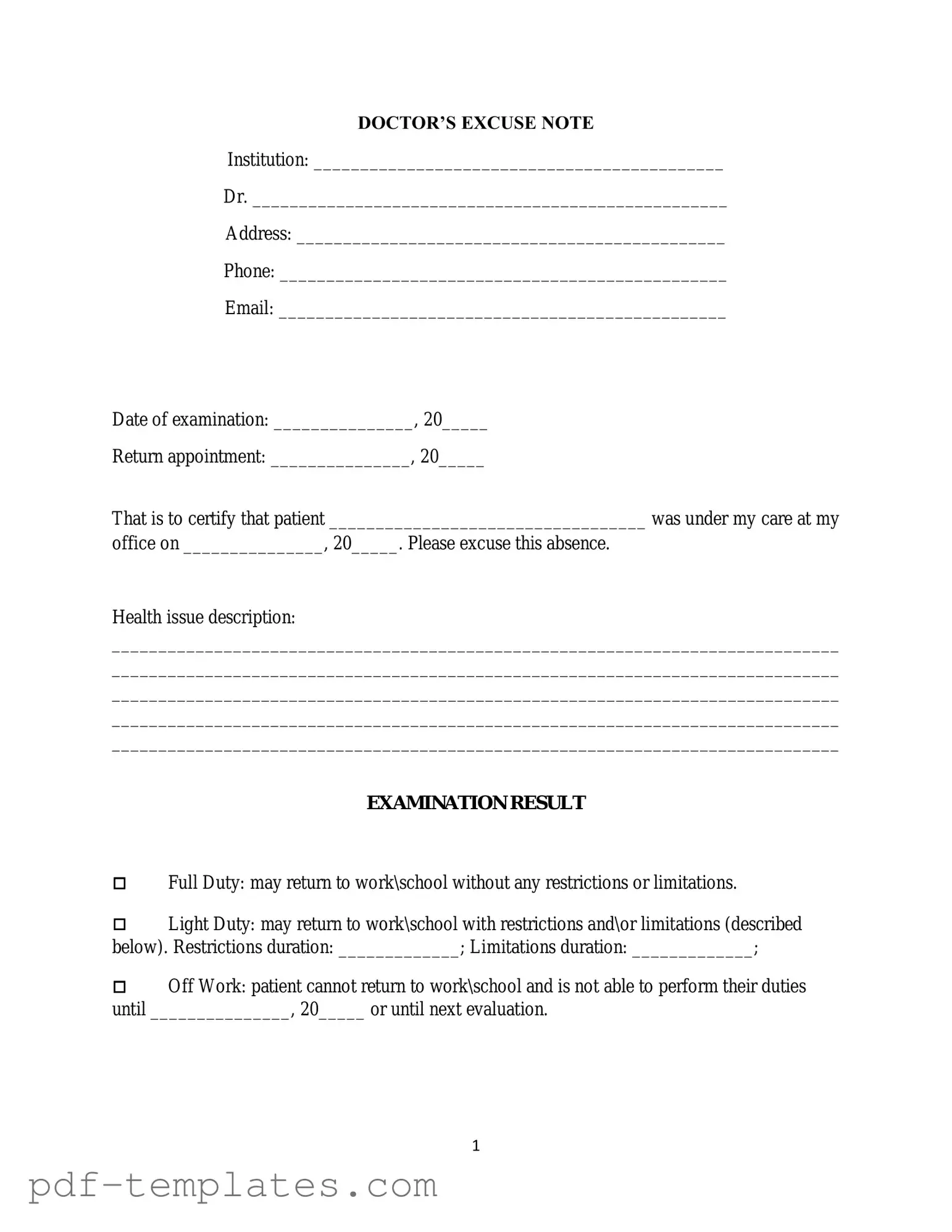The Medical Leave Certificate is a document that serves a similar purpose to a Doctor's Excuse Note. It is typically issued by a healthcare provider to confirm that an individual has been unable to work due to medical reasons. Like the Doctor's Excuse Note, this certificate outlines the nature of the illness and the recommended duration of leave, ensuring that employers have the necessary documentation for their records.
A Fitness for Duty Certificate is another related document. This certificate is provided by a healthcare professional to indicate that an employee is fit to return to work after an illness or injury. While a Doctor's Excuse Note may excuse an absence, the Fitness for Duty Certificate confirms that the individual is now capable of performing their job duties safely and effectively.
The Sick Leave Request Form is also similar in function. Employees use this form to formally request time off from work due to illness. It often requires a doctor's note as supporting documentation. Both the Sick Leave Request Form and the Doctor's Excuse Note emphasize the need for communication between the employee and employer regarding health-related absences.
A Health Care Provider's Statement is akin to the Doctor's Excuse Note in that it provides verification of a patient's medical condition. This document is often required for insurance claims or to validate time off work. It outlines the patient's diagnosis and treatment plan, offering a comprehensive view of their health status.
The Return to Work Form is another document that shares similarities. This form is completed by a healthcare provider to confirm that an employee can safely resume their job after a medical leave. It typically includes any restrictions or accommodations needed, much like the Doctor's Excuse Note which outlines the need for absence due to health issues.
An Absence Verification Form is also comparable. This document is used by employers to verify an employee's absence due to medical reasons. Employees may need to submit a Doctor's Excuse Note along with this form to ensure proper record-keeping and compliance with company policies regarding sick leave.
The Short-Term Disability Claim Form is similar in that it is used when an employee cannot work due to a medical condition. This form often requires detailed information about the employee's health status and may necessitate a Doctor's Excuse Note as part of the claims process. Both documents aim to provide clarity and documentation for health-related absences.
The Family Medical Leave Act (FMLA) Certification Form is another relevant document. This form is used to request leave under the FMLA for serious health conditions affecting the employee or a family member. It requires medical certification, similar to a Doctor's Excuse Note, to validate the need for extended leave and ensure compliance with federal regulations.
A School Absence Note is also comparable, particularly for students. This note is provided by a healthcare provider to explain a student's absence from school due to illness. Like a Doctor's Excuse Note, it serves to communicate the reason for the absence and may be required by educational institutions to excuse missed days.
Lastly, the Insurance Claim Form is similar in that it often requires documentation of a medical condition. When filing a claim for medical expenses, individuals may need to submit a Doctor's Excuse Note to substantiate their claims. Both documents aim to provide evidence of health issues and facilitate necessary administrative processes.
